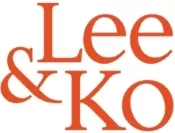Maximum 5 Times Punitive Damages for Misappropriation of Technology
The Korea Fair Trade Commission's (KFTC) proposed amendment to the Fair Transactions in Subcontracting Act (Subcontracting Act) was approved by the National Assembly during its plenary session on February 1, 2024 and will take effect on August 28, 2024. The amended Subcontracting Act strengthens the overall regulation on the misappropriation of technology by (i) raising the maximum limit on punitive damages for the misappropriation of technology from 3 times to 5 times the amount of damages incurred, (ii) implementing standards for calculating the amount of damages and establishing a burden of proof that is favorable to the subcontractor for the misappropriation of technology. The main changes to the amended Subcontracting Act are as follows.
- Maximum punitive damages for the misappropriation of technology increase: from 3 to 5 times
The current Subcontracting Act stipulates that the prime contractor shall compensate the subcontractor up to 3 times the amount of damages incurred if the damages are caused by the use of the technical data by the prime contractor or for a third party, or if the technical data is provided to a third party.
However, in practice, the amount of compensation for damages caused by the misappropriation of technical data tends to be limited to 2 times the amount of damages (Seoul High Court Decision No. 2020Na2032402, December 23, 2021, etc.).
The amended Subcontracting Act raises the maximum limit on punitive damages for the misappropriation of technology from 3 times to up to 5 times the amount of damages in order to curb the misappropriation of technology and compensate victims an amount that is more realistic to the amount of damages incurred. However, in cases involving unfair decisions on subcontracting payments, unfair cancellations of entrustments, unfair returns, unfair reductions of subcontracting payments and violation of the prohibition of retaliatory measures, the current maximum limit on compensation of 3 times the damages incurred remains the same.
The amended Subcontracting Act is applicable to violations occurring after it takes effect.
- Introduction of standards to calculate damages for the misappropriation of subcontractor's technology
Even if small and medium-sized enterprises suffered damage due to the misappropriation of technology, it was difficult to calculate or prove the amount of damage as there was no specific standard for calculating the amount of damages.
The amended Subcontracting Act establishes a standard for calculating the amount of damages applicable to the subcontracting sector based on similar legislation, such as the Patent Act, in order to ease the burden of proving the amount of damages to the affected company.
The amended Subcontracting Act is applicable when an affected business entity claims compensation for damages occurring after the amended Subcontracting Act takes effect.

- Implications and future steps
The KFTC has continued to strengthen regulations on subcontracting, and the passing of the amended Subcontracting Act is expected to further bolster this trend. The amended Subcontracting Act specifically prescribes up to 5 times the amount of punitive damages (higher than 3 times the amount of punitive damages under the current law) for the misappropriation of technology compared with other types of violations of the Subcontracting Act and improves regulations to benefit subcontractors. The imposition of such high punitive damages is difficult to find in other countries with civil law jurisdiction, except Korea.
If a company engages in transactions with a subcontractor possessing core technology, it is necessary to mitigate the potential risk of the misappropriation of technology by (i) establishing an internal compliance manual and monitoring system in advance and (ii) clearly defining the structure of the contract to reflect intellectual property rights. It is also advisable to seek the guidance of external counsel for establishing an internal compliance system.
The content of this article is intended to provide a general guide to the subject matter. Specialist advice should be sought about your specific circumstances.



